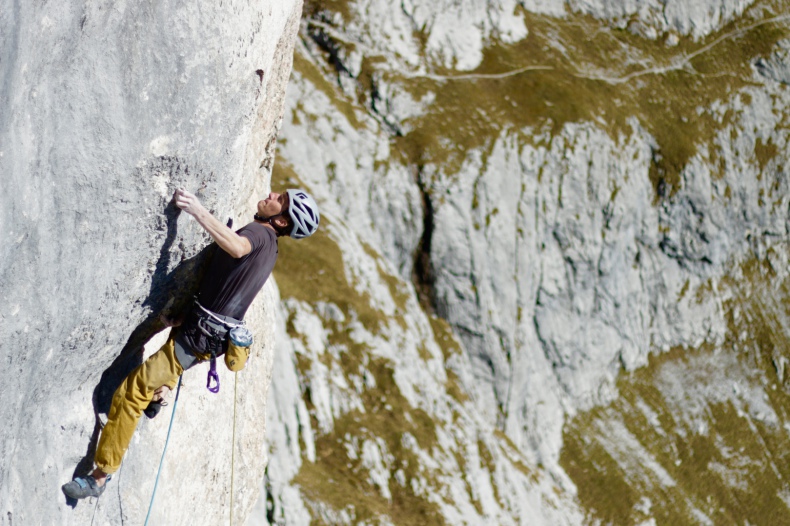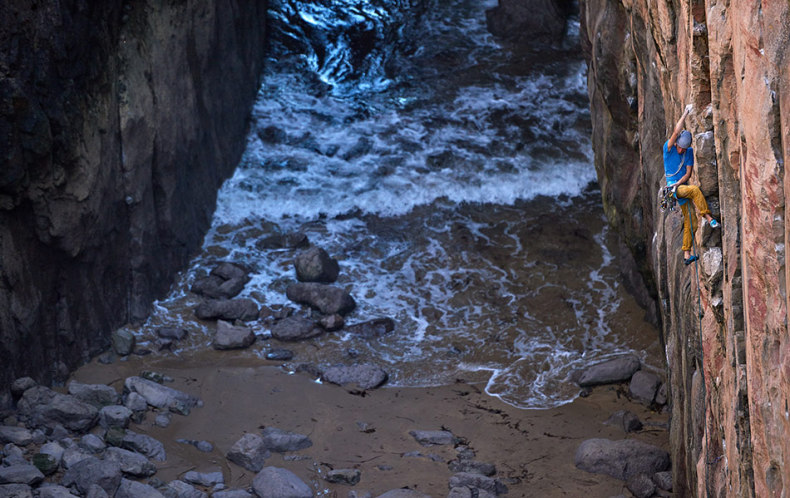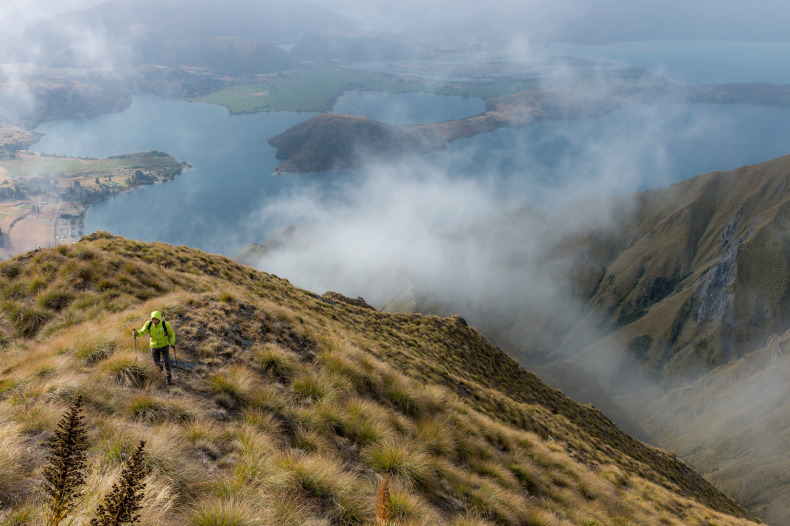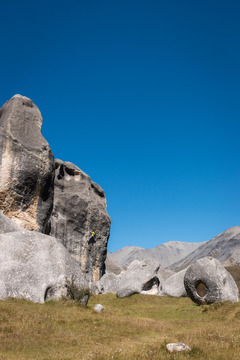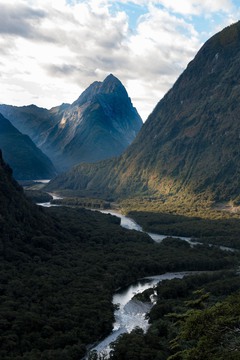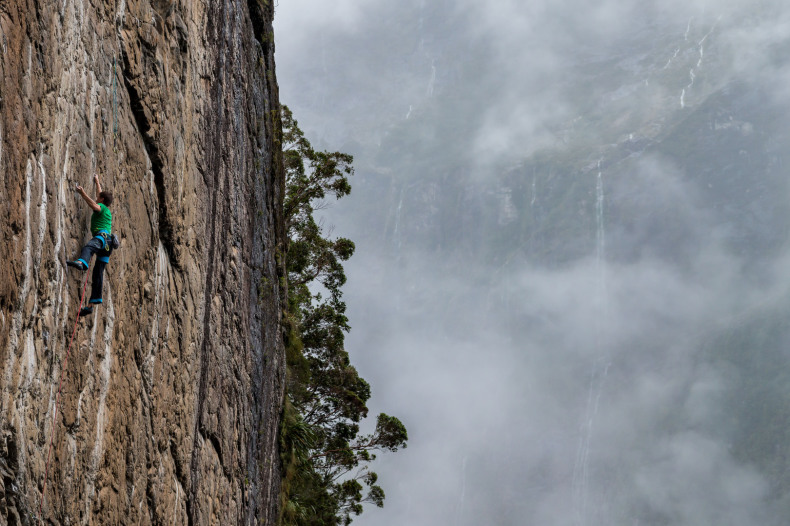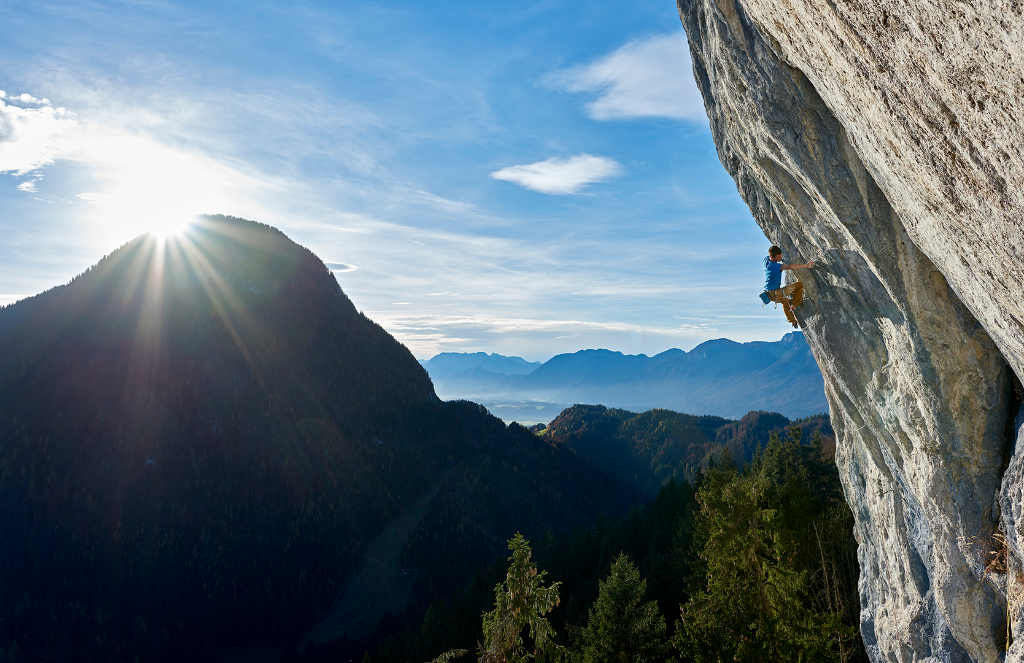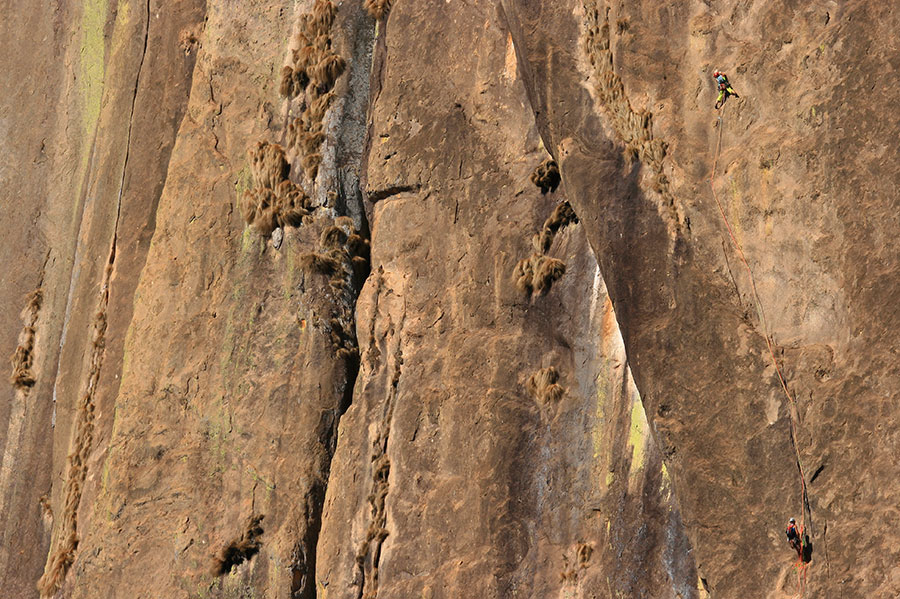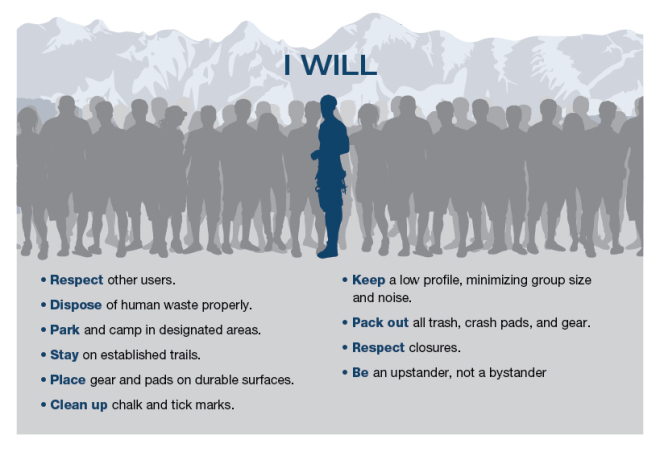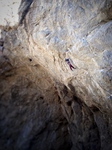
SENDING WOGÜ—EUROPE’S HARDEST MULTI-PITCH
Spring 2016
As usual, we are again completely soaked with rain. On top of that my tendon is completely done. I am hanging in my harness and can’t believe it. It’s a low point for both of us. Tough stuff in the mountains.
But let me start from the beginning …
Nalle Hukkataival asked me approximately 1.5 years ago if I would like to join him on WOGÜ. But after only the second day my pulley ligament in my middle finger was torn—a big setback for three months. I had never had a injury in my life! However, I committed it all to Nalle and belayed and supported him—but unfortunately we were shut down by bad weather.
What I had perceived during that spring mission with Nalle was that WOGÜ was for sure not in my reach.
So what did I do for three months of being injured? Oh, the usual stuff. I shared beers with good old friends, studied for exams and visited my grandma more than I ever did before. This break was great but, in the end my grandma got worried.
So she gave me this advice: “I should have faith in big objectives!”
After that I made up my mind and followed a plan
Spring 17
I had new wind in my life. I moved to Innsbruck and started working. And it was time to try the monster of the alps again.
This was my schedule.
6:00 a.m. wake up. One hour of hang boarding and core strength exercises
8:00 a.m. - 12:00 p.m. Office time.
12:00 p.m. 1:30 p.m. Lunch with one hour jang boarding and core strength exercises
1:30 p.m. – 6:00 p.m. Office time then one hour hang boarding and core strength exercises
I did that over weeks. The truth is, my favorite phrase “effort is the answer” fits for every project, otherwise it isn’t a project.
Sometimes I drove alone to the mountain range and rappeled the entire route and filmed with my phone the handholds and talked to myself about the sequence. Does that sound super weird? Trust me, I would laugh about it later. But honestly, I was discovering new ways to become more efficient. That is the cool thing about climbing. There is always space to be a better, smarter climber, not just physically stroner. The climbing is so demanding, brutally fingery and sustained. This is the reason why you need hours to get use to the climbing.
A long planned expedition to Tibet held me back from the Alps. I came back truly obsessed, though, with a full belly of rice noodles and a mind that was ready for the Rätikon. The 40 hours of travel back home didn’t phase me.
My mom picked me up from the airport and served me some good food at my parents place and asked me if I would stay at home a bit. My answer was that I’d already packed the car and was going to Switzerland. I had something left I needed to do.
She shook her head.
“Why you are so driven boy?”
I said nothing to her. But I knew the answer. If I have a drive in my live for anything, than it’s probably worth it.
The following two days in the mountains were the worst I’ve ever had. It was full of snow. I got a cold and I simply felt awful. After that weekend I thought I’d have no chance to climb it.
I gott back to the weekly office life and started to gain new strength.
Two weeks later my friend Zeno Hamberger gave me a call.
“Hey, Rolo. As I promised, I will support you on your project … because the university is closed.”
We both started laughing.
The first day on the wall I was unexpectedly close …
Three times I fell in the last 40-meter long 8b+, always on the last few meters to the anchor. However, my mental batteries were so empty and I had insane cramps in my arms.
Two days after that, on September 30, I found a unique flow.
I sent every pitch on my first go and reached the summit at 7 p.m. with tears in my eyes. I coiled up the ropes, hugged my friend and realized I climbed one of the hardest multi-pitch climbs in the world. Then, 15 minutes later, it began to rain.
Destiny?
Trad climbing in Wales
Sometimes last minute trips are simply the best, and the BD team’s recent excursion to Wales was no exception.
A couple of weeks before our departure, I came up with the idea of a short trip to the UK in order to trad climb. Indeed, beside the poor weather, the UK is known worldwide for its strict climbing ethics and trad climbing history. I had read a lot of stories and wanted to experience it first hand.
Probably one of the most famous climbing destinations in the UK is the Peak District, but, because it’s too hot there in summer, I searched for another destination. That’s how and I ended up gazing at pictures of some impressive sea cliffs, which seemed to be a famous trad climbing destination in South Wales. It looked so good and different from all the other areas we’d visited before, we knew we had to go.
So, the destination was decided ... but we needed to find someone keen to join the trip. That wasn’t a hard task as Roland Hemetzberger and Lara Neumeier were motivated to team up with us for a two week trip to Wales.
That’s how everything started, with just some pictures in our mind and without a fixed plan of what to do.
On June 22 we flew to Cardiff, as we decided to start our trip in Pembroke. We got a guidebook, rented a place and drove straight to the cliff. We were welcomed by the typical English weather: wind and drizzle. Not the best conditions, but we didn’t care too much, as we were super motivated to sample some of the classics. Our motivation didn’t help us for long, however. After a few hundred meters we were stopped at one gate by an officer; apparently most of the cliffs were situated on a military range and we couldn't enter because they were firing. Bad news, as we had planned to spend the first five days of our trip there! Luckily the firing was supposed to stop at 4.30 p.m., so we went to a cliff nearby in order to get used to the rock and wait for the gate to open.
Nirwana 8c+ 7 pitches at the Loferer Alm Austria
A journey to New Zealand´s First 9A
New Zealand is a wonderland of glaciers, rainforests, rugged coastlines and amazing climbing. We Stefan and myself traveled to NZ to sample all that it has to offer, and ended up making the first ascent of Nebuchadnezzar. For me it has offered the grade of 9a, which would make it the hardest route in New Zealand.
We were traveling to New Zealand to check out the climbing. Weather and other circumstances made us go to the very south of the South island to Fjordland around the legendary Milford Sound.
Then, there was this unlikely good weather window: I had three days to get the route done. It was totally his style– worldclass rock, slightly overhanging. On the last day before the rain came back, I slipped on the very very last move of the crux...
Then, it started to rain.I had just one last go. Stefan was belaying, standing in the rain totally pouring down on him, no chance there would be another go for a long time… And then I sent it. So cool. Couldn't have been better for me.
A perfect Intro with an perfect Outro
After bagging the first repeat of Fugu(5.14d), the first ascent of Delirium (5.14b), big walls in Madagascar and splitter cracks in Indian Creek, Roland Hemetzberger ended his “perfect year” with the first ascent of Outro (5.15a)—his hardest send and first 5.15.
The 25-year-old German climber started out the year by sending five 5.14c’s, three in Spain and two in Austria. “Afterwards it was very unexpected that I managed thefirst repeat of Adam Ondra’s Fugu,” he told Rock and Ice. The route, at the famous Schleierwasserfall in Tirol, was an old Alex Huber project before Ondra’s ascent.
With Fugu, “I found something exact in my vision,” Hemetzberger told Rock and Ice in a previous interview, “steep but not a roof, endurance but with hard boulder problems and super beautiful rock.” Hemetzberger repeated the climb after six days of effort.
When summer rolled along, Hemetzberger traveled to the Kaiser range of Austria, the northern terminus of the Alps, to take care of unfinished business. Three years ago, while climbing Scheffler/Siegert (8a+/5.13c 6 A2), he spotted “a super steep, blank wall without any routes,” he wrote on his blog.
The next year, he returned with friends and established the first meters of a new route. Another fall, winter and spring passed before they completed the route, ground-up and in “the best style” they could. It took three days to top out, but due to bad conditions, they were not able to redpoint every pitch.
Hemetzberger returned once again. With better weather, and after spending four days to become reacquainted with the crux sequence, he sent the route in a single day. Delirium, 13 pitches, went free at (8c/5.14b).
“…long summer days in the higher altitude and the beautiful views make these moments unforgettable,” Hemetzberger said. “These days are way stronger in my mind than just a sport climbing day in a crag.”
Afterwards, Hemetzberger did some big wall climbing in Madagascar and crack climbing in Indian Creek, Utah—his first climbing trips overseas, he said—before returning to Siurana, Spain for “Project Siurana,” Black Diamond’s stewardship project.
In Siurana, he climbed Gabriele Moroni’s La Carriola (8c+/5.14c), the direct start of Lola Corwin (~8c/5.14b).
Hemetzberger then set his sights on an old Stefan Fürst project in Achleiten, Austria. Fürst, a relatively unknown yet legendary first ascentionist, first attempted the line in the mid-90s. The project remained unclimbed for nearly 22 years
“I never invested so much time and effort in a route,” Hemetzberger said, “and fortunately in the end of a perfect year I climbed my hardest route so far.” He claimed the route’s coveted first ascent on December 25 and suggested 9a+ (5.15a) for the grade.
Outro, the name Hemetzberger gave the route, is his first venture into 5.15 territory. He only suggested the grade, since he has never climbed a 5.15a before. “..it’s very hard to compare all the routes that I did in the past but Outro is for sure my hardest,” he said. “ I hope other climbers will get in touch with this awesome route.”
This article is from ``RockandIce`` thanks a ton
Madness in Madagascar
After seeing images of the towering walls of Madagascar in a book years ago, Black Diamond Ambassador Roland Hemetzberger knew that he had to visit the island. This year, his dream finally came true.
Finally, this year, the dream came true, and I had the opportunity to travel to Madagascar, spending one month in the incredible country. The air travel from Munich to Antannarivo was over 30 hours, and from the airport to the Camp Tsarasoa was another 15 hours by bus. As we entered the capital city for the first time, which had almost no street lightning, I realized that Madagascar is a completely different country from any that I had traveled to before. The culture shock hit me hard. Maybe the exhaust that poured into the windows from the bus's broken exhaust pipe had something to do with my first impression, but I don't know.
After the first night in camp, we were able to really see the stunning walls of the Tsaranoro Massif. We were totally stoked to watch the perfect granite cliffs soaring 800 meters overhead. From camp you can see many awesome routes, not only the most famous one, Tough Enough, which was redpointed in a single day by Adam Ondra, but also plenty of routes for all levels of climbing. If you look into the collection of topos, you will be overwhelmed by the amount of lines—so many meters to be climbed.
It didn't take us long to start the approach to our first route. Though the wall looks very easy to get to, we had to learn how hard it can be to take the wrong path. But after hustling through very tight bush and two-meter high grass, we finally found the start of our first climb, and after the first pitch, all the trouble of getting there was blown away. Sharp granite climbing offered many crimps, and technically demanding face climbing offered variety. So good
Out of the many routes we did, a highlight was Out of Africa, a 620-meter free climb. None of the 14 pitches are graded harder than 7a, and the climbing is just perfect. A bivy on the top made it possible for us to watch the sunset and sunrise in a very remote and stunning place. Spending longer on the top, it was easy for us to imagine how the dinosaurs used to live in this area millions of years ago. The landscape is wild, like nothing we had seen before, and from so far up, the light was different, washing the environment in a kind of glow.
We enjoyed our visit immensely, getting to know nice people and having so many good days outside. Madagascar showed us that climbing isn't that important, even if it is a perfect place for it. What is really important is the people and experience you encounter along the way.
Firstascent at the Wilder Kaiser `` Delirium 8c ``
Delirium is located in the Kaiser range of Austria. This range is in the northern beginning of the Alps and has been very popular among climbers for over 100 years. Legendary climbers like Herman Buhl and Hans Dülfer put up many classic lines here, and the history of the place makes it even more special. For example, near Delirium, there is another route called Pumprisse, which was the first-ever 7 on the UIAA scale and was first ascended by Rheinard Karl and Helmut Kiene in 1977.
I have been climbing in this area for several years. Three years ago, I freed Scheffler/Siegert (8a+ / 6/A2 ), an old aid climbing line from the early '60s, protected just with pegs and traditional gear. While trying this route, I discovered to the right a super steep, blank wall without any routes. A year later, I came back with some friends, and we started to establish the first meters of a new route. Last year, we finished the route in three days. All the establishing was made ground up and in the best style we were able to.
But due to very bad conditions last year, it was impossible to redpoint the whole route. This year the weather was very good and the whole line was dry for a longer period. I was lucky to send it in one day after four days of finding the right sequence for the crux. The route was a great adventure because after the four overhanging pitches, the line changes to alpine terrain, and you have to find your way through another four clean pitches in an awesome setting. It was a day I will never forget.
#LIVECLIMBREPEAT
A tribute to the climbing life
The Void 9a F.A / Lichtblick 9a F.A
This is a small edit of raw footage about two sportclimbing projects in Achleiten, Austria.
Achleiten is a nice crag pretty close to my home. There a super derb routes and as I grew up there as a climber
I bolted a few lines many years ago, too. Last year I was able to send two of them "Lichtblick" and "The Void".
About the grading: I suggest 9a for both of them - but let's see what other climbers will say.
Special thanks to Stefan Kühn and Fabian Hagenauer for the edit.
Salt Lake City, Athlet Summit and a lot of other great memories, first steeps oversea #SuperNiceTasty
I had the opportunity to visited the Black Diamond Headquarter in SaltLakeCity Utha.
The BD athlet summitweek was on the run, it was a great time that we spend togehter.
All the boys and girls are super psyched, we love our passion we live our passion thats awesome.
We checked the BD headquarter and leard a lot about the brand, defently an super authentik brand
with awesome people on it.
The Rockproject Tour stopped in SLC and I was part of it and I can say its a perfect example work togehter for an activ responsibility from climbers for climbers. Commit the pact !!!
Next trip oversea is planning...
Cheers #SuperNiceTasty
Super happy to managed the first repeat of Adam Ondras ``Fugu`` at Schleierwasserfall
This artical is from the BlackDiamond experience site...

Fugu, located at Schleierwasserfall in Tirol, Austria, is one of the best and biggest sport climbing spots of Austria (and maybe worldwide). It is well known for its futuristic routes, set by legendary climber Alexander Huber nearly 20 years ago. Two of the best and most difficult are definitely Weisse Rose (FA A. Huber, 1994) and Open Air (FA A.Huber, 1996).
Both routes were first repeated by Adam Ondra in 2008, and he gave Open Air a suggested grade of 9a+ (5.15a), which meant that the line was the first of its grade ever worldwide. During Adam's 2008 visit, he also made the first ascent of an old visionary Alexander Huber project that was bolted in 1998. Adam named the route Fugu because all of the climbs in the Aquarium Sector have fish names, and the line is as delicious as a gourmet fish dish, too.
Fugu is about 25 meters of climbing, starting with 15 meters of steep 8a climbing. After this, the first boulder starts and it is around Fb 7C, which leads into a bad rest. Then the second crux has to be climbed in the grade of Fb 7C+. Both cruxes are very close together, and due to the bad rest, it is very hard to connect both sections. A lot of body tension is needed for sure. After the cruxes there are a few easy meters to go where you shouldn't fall.
I started to check the moves of the route out in autumn last year, spending just one day on the route. I realized the climbing fits my style very well, so I was very motivated to try it after this winter. In the middle of March, I returned to Fugu five days in a row. On the fifth day, I was lucky to make the first repeat of this amazing line. Not only the history of Schleierwasserfall but also the quality of the rock and the nice landscape make this place special to me. I am looking forward to sharing further great times at this place in the future.
—Roland Hemetzberger
All photographs: Fabian Hagenauer
Climbing Reviews 2014
A small review of some
climbing-projects about the last year, footage from:
Zillertal First Ascent ``Goldensecret``, Aladaglar
Expedtion, Zarathustra First Ascent, Solo per vecchi,
First Ascent Wilder Kaiser,
Film&Cut: Stefan Kühn, Fabian
Hagenauer
Sound: Missue / BroadPeak
/ soundcloud.com/missuemusic/broadpeak

